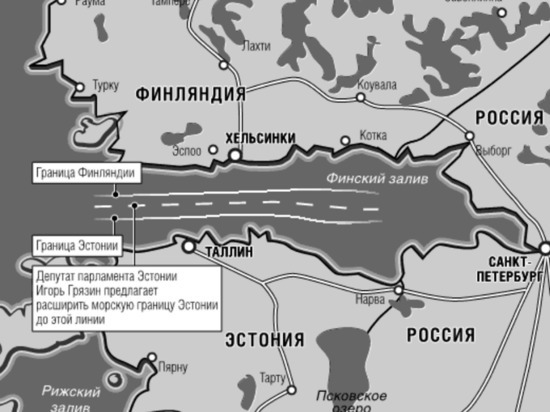“Lock Russian ships”: Estonia decided to block Kaliningrad from the sea
[ad_1]

The Baltic country is going to create a “contiguous zone” in the Gulf of Finland
Estonia may create a “contiguous zone” in the Gulf of Finland, according to the website of the Ministry of Foreign Affairs of the Republic. This will allow control of 24 nautical miles (44 km) from the baseline of territorial waters. This will give the Estonians the opportunity to “inspect”, that is, to check the ships passing through this zone. Some publications immediately reported that the Baltic country would now be able to detain Russian warships, but this is not the case: the right of inspection does not apply to warships of foreign states or ships used for non-commercial purposes. Nevertheless, the decision of the Estonian authorities may spoil the blood of Moscow.
“I consider this decision an important step in strengthening the security of Estonia, because in this way we will have a better idea of what is happening in our coastal region,” said Foreign Minister Urmas Reinsalu. “This expansion of control will certainly have a beneficial effect on environmental protection.”
According to the Estonian version, the measure is aimed at preventing violations of customs, tax, immigration and sanitary legislation in the territorial sea, and will also allow violators to be held accountable. However, the initiative is still only at the stage of discussion.
“There is still international maritime law here. You have to start from this. Therefore, freedom of navigation is guaranteed by this right. And we proceed from the fact that this will continue to be so, ”Dmitry Peskov, press secretary of the President of the Russian Federation, commented on this news.
The Estonian Foreign Ministry denies that the initiative will help them apply sanctions against Russia more effectively and inspect Russian ships more thoroughly, but, nevertheless, an appropriate mechanism will appear. Ships sailing from the port in St. Petersburg may actually end up in the zone of influence of Estonia or Finland. “Namely, from the Leningrad region, for example, Kaliningrad is being supplied,” Anatoly Kuznetsov, editor-in-chief of the Maritime News of Russia publishing house, reminded MK:
— There are two coasts: Finnish and Estonian. And St. Petersburg is located at the very base of this bay. When Finland was not going to join NATO, Russian ships sailed through neutral waters and did not touch Estonian maritime borders. A small piece of neutral waters remained there, along which Russian ships sailed without violating the water boundaries of both countries.
If Tallinn takes this step, then Russian ships will enter the territory of either one or another country. This is done in order to block the ships that go from the ports of Ust-Luga and St. Petersburg.
– Why are we talking about the blockade, if we are talking only about checks?
— It’s not right for someone to check Russian ships Let’s say the ship is carrying grain, coal or mineral fertilizers, and the Estonian side can turn the ship back, because there is allegedly a lot of coal, and this pollutes their waters. Well, or issue a fine. You cannot agree to this. It’s humiliating.
Isn’t this international practice?
“Yes, but only when it happens in recognized waters. That is, those that Estonia already owns today. If a ship enters there without asking, the country has the right to stop it, check the cargo and decide to let it pass or turn back. But in this case, they just invented another piece of territory for themselves. It is possible that international law allows this in some forced cases, but here we are talking only about a political decision – to cut off the supply line to Kaliningrad.
— Can Estonia take this step legally?
“Don’t even think about writing that legally they have the right to do so!” They cannot institute this unilaterally without taking into account the interests of a third party, which is Russia.
[ad_2]
Source link








